Artist in Residence Program
2015 Resident Artist
ARCUS Project’s Artist-in-Residence Program received 599 applications from abroad (88 countries and regions). Following a careful screening process, Timoteus Anggawan Kusno (Indonesia), Stephanie Bickford-Smith (UK) and Eduardo Cachucho (South Africa) have been selected as the 2015 residents. The artists will participate in a residency at ARCUS Studio in Moriya, Ibaraki, for 110 days from August 18 to December 5, 2015.
As the judges for this year’s applications, we welcomed Iida Shihoko, an independent curator and associate professor at Department of InterMedia Art, Faculty of Fine Art, Tokyo University of the Arts as our guest curator and Nanjo Fumio, ARCUS Project adviser and a director of Mori Art who made the selection through a process of discussion with the ARCUS Project Administration Committee.
Overview of the 2015 Selection
A total 599 applications were received from applicants in regions all over the world, ranging from established artists with solid resumes of international activity to young artists who recently graduated from university. Many of the applicants were from locations in Africa, South America, and the Middle East. Thus, we can see that international art scene trends of recent years are also reflected in artist-in-residence programs. Judging from the rich variance of applicant backgrounds, we obtained a well-rounded screening that shows the achievements made by ARCUS in its 20 some years.
Among the proposals were dynamic large-scale sculptures, a sound work taking the entire Moriya area in its scope, and a plan for escaping the stereotypical imagery of Japanese culture, created on the basis of individual research. Because many of the proposals would have been interesting if realized, we had considerable difficulty narrowing down the finalists. Ultimately, judging on the basis of ARCUS’s objectives and special character, we selected artists not on the basis of a completed work intended for display but with regard to the momentum their residency in Moriya would impart to future art production. As a result, we chose three young artists showing promise for the future, having obtained their own expressive language in recent works and methods of research suited to it.
(Guest curator, Iida Shihoko)
Timoteus Anggawan Kusno
Indonesia

Born in Yogyakarta, Indonesia in 1989. Lives and works in Yogyakarta.
In 2012, Timoteus Anggawan Kusno obtained a B.A. in media studies in the Social and Political Science department at Gadja Mada University (Yogyakara). Kusno uses a wide range of production techniques—drawing, graphic design, photography, video, and writing and editing literature. In 2014, he held a solo exhibition, “Ethnography Exhibition by Center for Tanah Runcuk Studies: Memoar Tanah Runchuk” (Kedai Kebun Forum, Indonesia). Constructing fictional research into territories whose existence, although unconfirmed, has been passed down since colonial times, Kusno gives flesh and blood reality to stories through collaborations with regional residents, woodcraft, printing, book- making, and leatherwork artisans. His major exhibitions of such work include “Liminal” (Cemeti Art House, Indonesia, 2015) and “Les Tonerres de Brest 2012” (Brest, France, 2012).
Selected Works

Interview and shooting with Enomoto Miyoko and Katsuo at the Enomoto house
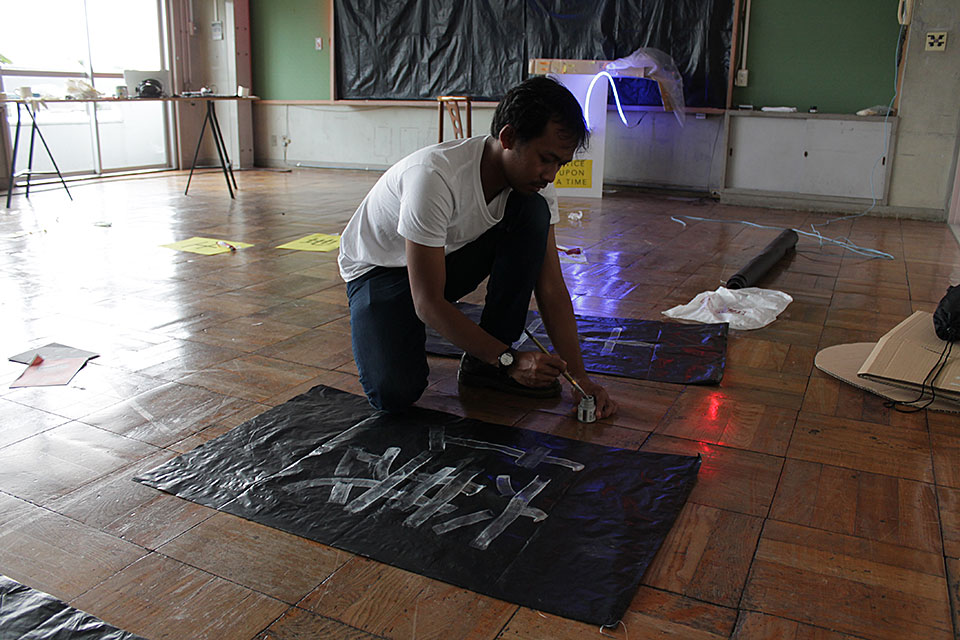
Work in progress at the studio
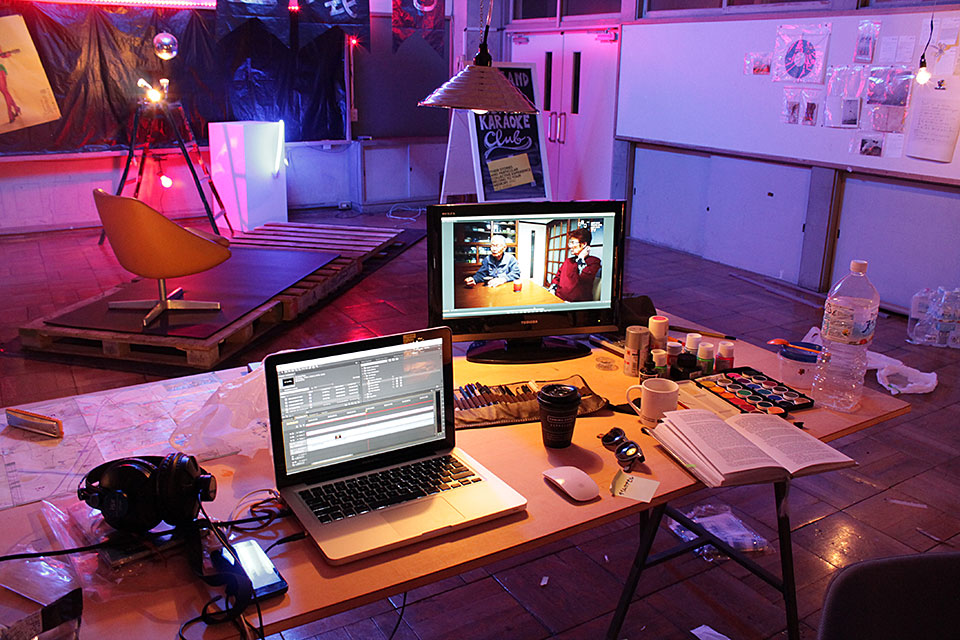
Edit the interview film

Studio visit by the guest curator Iida Shihoko
Open Studio
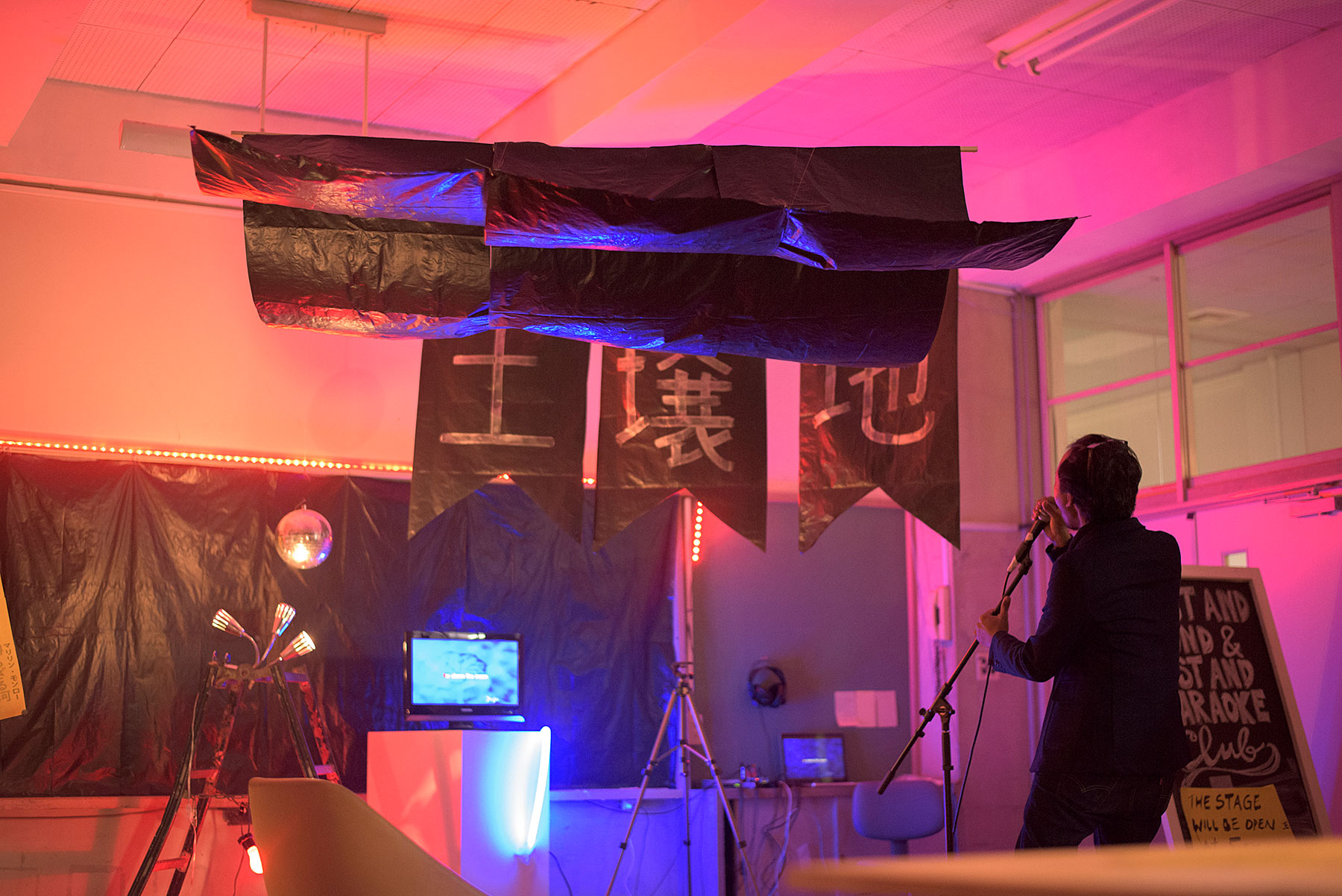
LOST AND FOUND & LOST AND KARAOKE CLUB in LFLW (17:30–19:00)

Instruction of participatory workshop at FORGETTING & REMEMBERING CLUB in LFLW (13:00 –16:00)
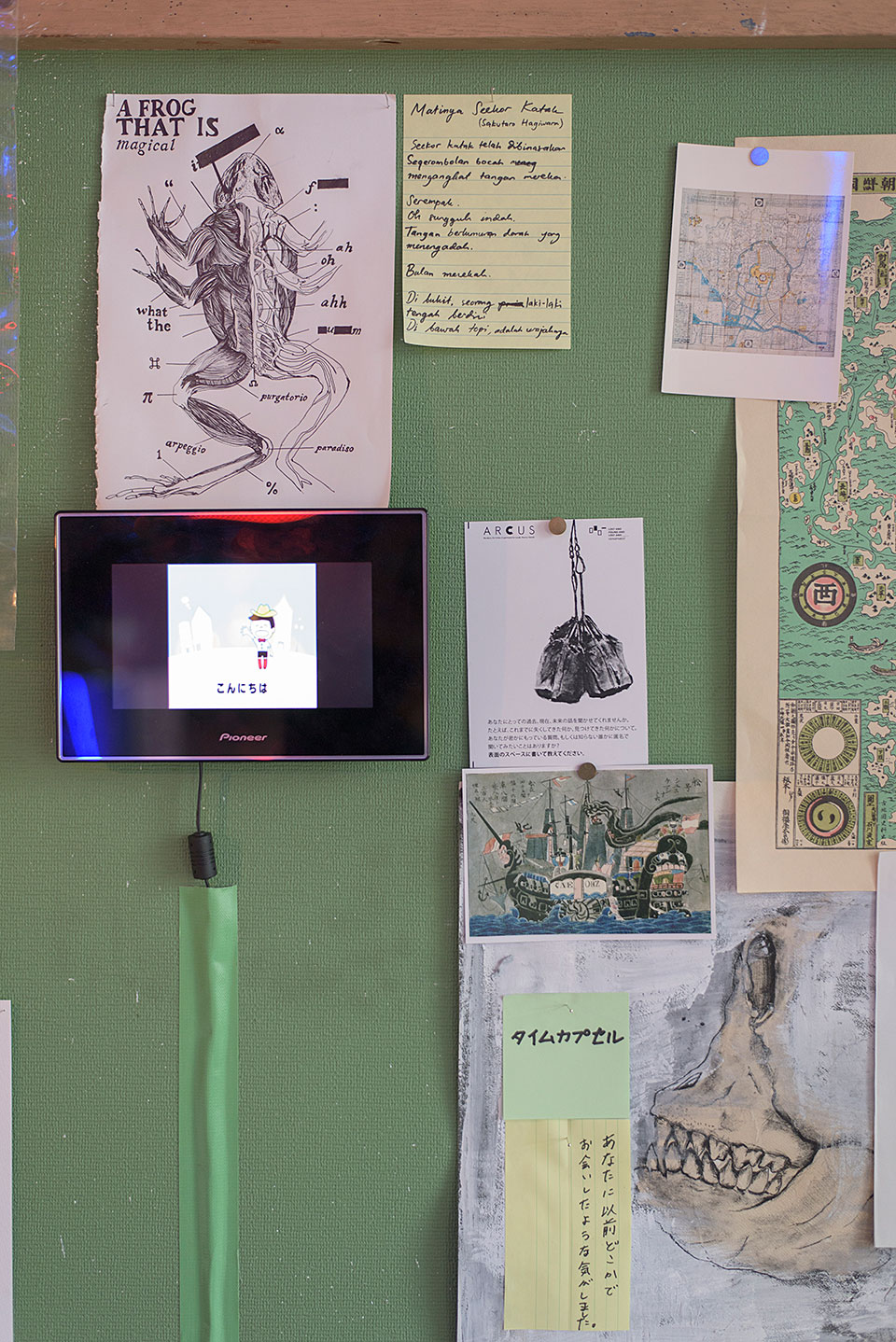
Open Studios: Collection of research materials and drawings by the artist
Artist Statement
I use historical approach to raise questions about how do we imagine ourselves as a part of the community —in relation to the (collective)
memory and the socio-political context which identity is fluidly constructed.
How do we relate ourselves to the past, and how do we remember (and forget)? How do (selected) memories are preserved through the text, material, and rituals—in contiguity with subject’s lived experience, discourse, and global context ?
Reason for Selection
Kusno’s drawings and sculptures of strangely formed, imaginary animals were captivating. They do not derive simply from the artist’s personal fantasies but rather are created on the basis of research into documentary records, craft objects, and relics from the colonial period; and his premise—that they are components of a lost territory rumoured to have once existed—is deeply interesting. As a result of Kusno’s ethnographer- like approach, a fanciful narrative consisting of documentation, folklore and legend is manifested, and embodied in an artwork in contemporary times. We sensed in such work the artist’s stance of constructing an alternative history from elements fallen to the wayside of factual reality, and we hold expectations that, in ARCUS as well, he will feel inspired by local myths and legends and sublimate them in a unique artistic form.(Guest curator, Iida Shihoko)
Stephanie Bickford-Smith
UK

Born in Helston, UK in 1989. Lives and works in Hertfordshire, UK.
Stephanie Bickford-Smith obtained an M.A. in Design Interactions at Royal College of Art, London in 2014. Her major exhibitions include “Always Print The Myth” (Victoria & Albert Museum, London, 2015), “The Party” (Villa Croce Contemporary Art Museum, Genoa, Italy, 2014), and “Buy Buy Buy, Sell” (Royal College of Art, London, 2014). Bickford-Smith creates performances and video works that examine how people seek a role in contemporary society through work and occasions for employment, as well as the difficulty of achieving a particular ideal. Using such methods as interviews, selfies, action pattern analysis and diagramming, and categorization and display of collected items, she herself becomes a hotel room cleaner and undertakes undercover investigations. Confronting the incongruity between ideal and reality, she relates her experiences. Bickford- Smith is a distinctive young artist creating humorous video works that question the boundaries of virtue and reason in society.
Selected Works

Set the studio for the workshop
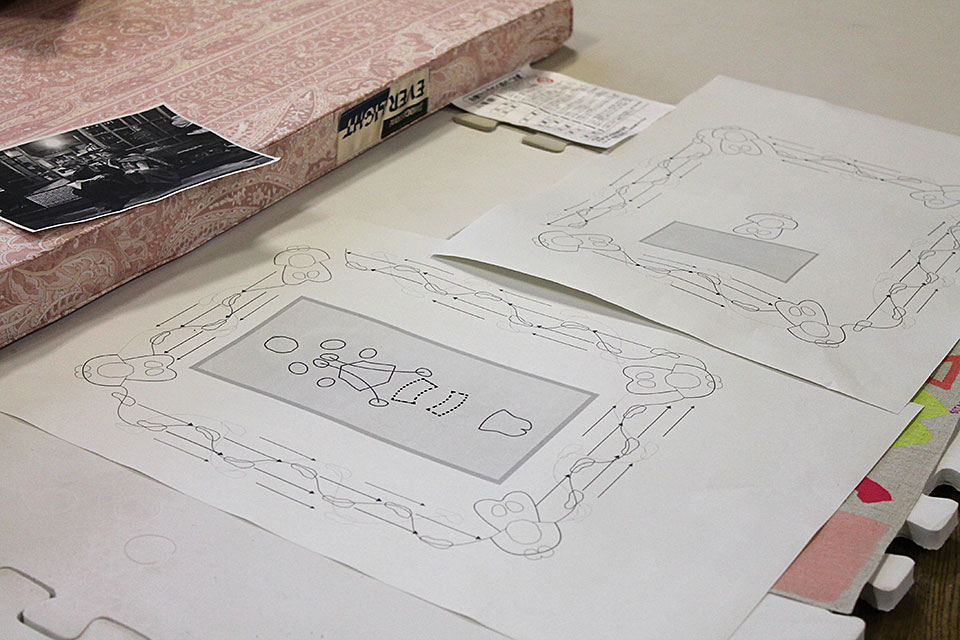
Drawing plan for the installation

Production with work partner
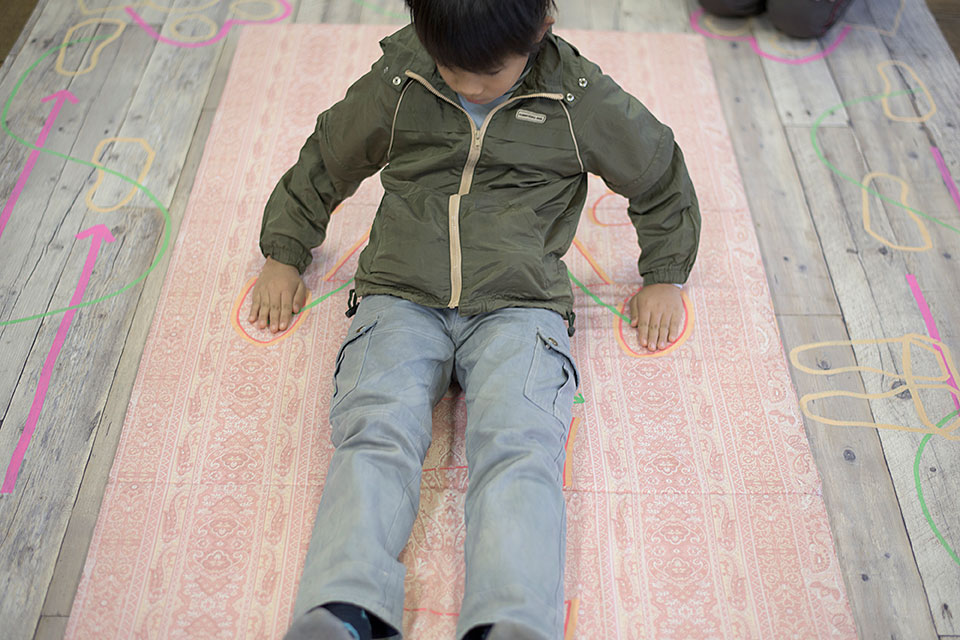
Kids experiencing the installation
Open Studio
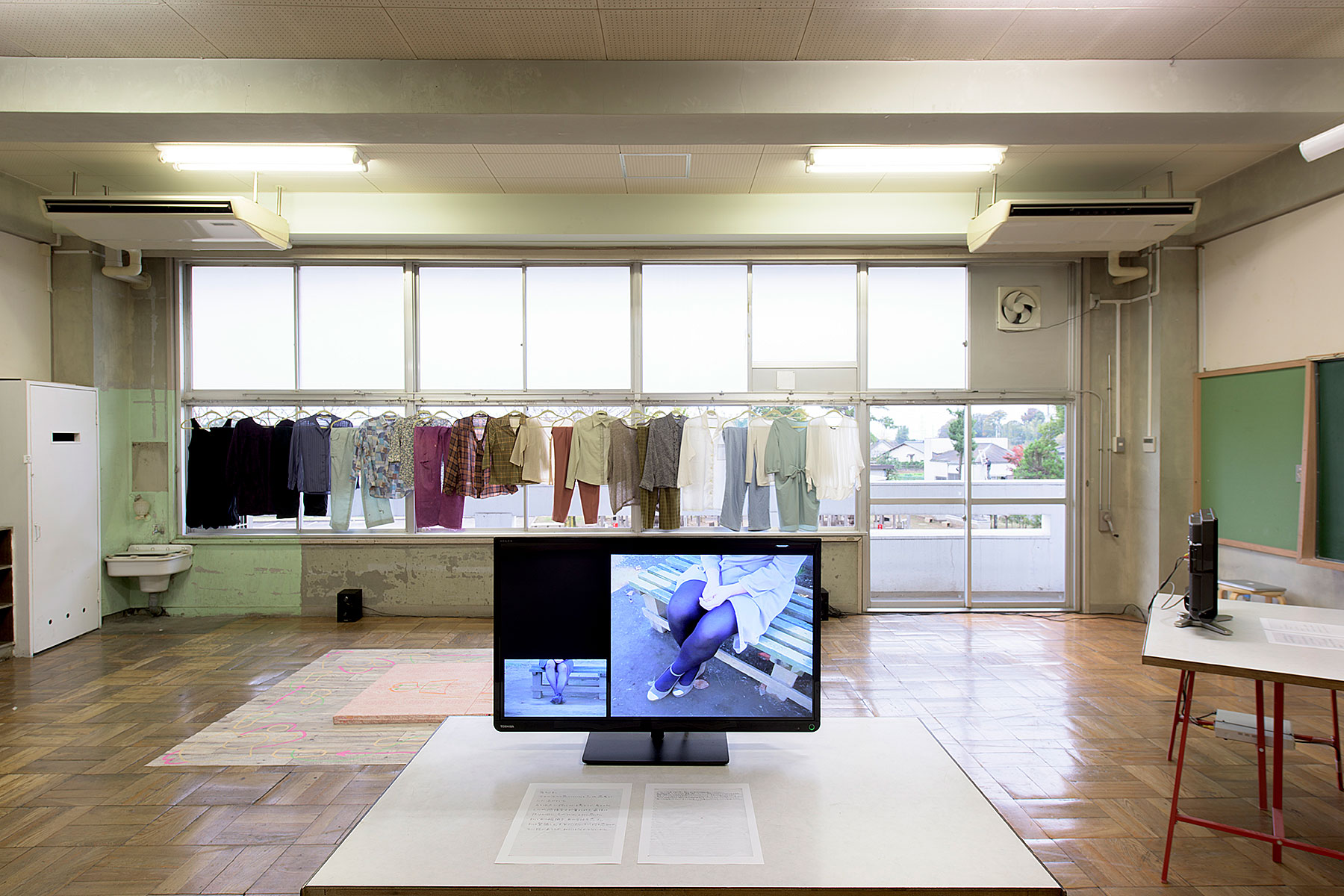
Perhaps I speak look feel Japanese
3-channel video installation

Still from Perhaps I speak look feel Japanese

Artist Statement
The intention of my work is to explore moral and ethical boundaries facing people in a divided society whilst maintaining a balance between science and humour.
During my time with ARCUS I am exploring spaces around nationalism and migration by conducting a social experiment to try and become Japanese through first hand observations and interactions. During my stay with ARCUS I hope to learn about Japan through the community of Moriya and to embrace the influences of my surroundings.
Reason for Selection
“Opportunities in the Margins” (2014) is a highly polished work Bickford-smith produced on the basis of video she took while working incognito for two months as a food delivery person and hotel room cleaner in downtown London. We found it to hold strong appeal for the viewer. Her other video works, as well, although initially appearing like sarcastically humorous self-taken documentaries and take-offs on reality television, in fact convey an objective observation and analysis of her social environment. While working earnestly, on the premise of people’s struggle and inability to understand others and adapt to their environment, she converts hardship to humour using a pleasing, witty style. For ARCUS she proposes to “become a Japanese person,” and we look forward to seeing how she will develop this concept.(Guest curator, Iida Shihoko)
Eduardo Cachucho
South Africa
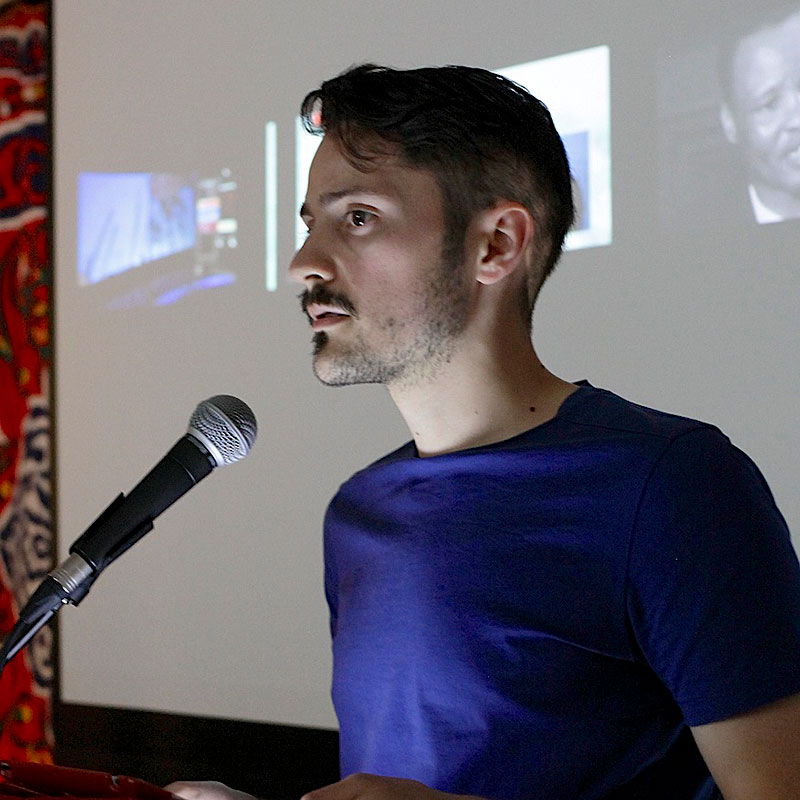
Born in Vanderbijlpark, South Africa in 1985. Lives and works in Belgium.
In 2008, Eduardo Cachucho obtained an M.A. in architecture at Witwatersrand University (Johannesburg). In 2015, he received an M.A. in fine arts at Dutch Art Institute (Arnhem). His major activities include “GIPCA Live Arts Festival” (Gordon Institute for Performing and Creative Arts, University of Cape Town, South Africa, 2014) and “BORG2014, Biennial event for contemporary” (Antwerp, Belgium, 2014). In 2012, Cachucho took part in “Spontaneous Interventions,” a group exhibition in the U.S. Pavilion at the 13th International Architecture Exhibition—la Biennale di Venezia (Italy), where he submitted an app for mobile phone artwork. His previous participations in residency programs include Cittadellarte-Fondazione Pistoletto (Italy) in 2011 and CSAV-Artists Research Laboratory (Antonio Ratti Foundation, Italy) in 2015. Based on his interest in South Africa’s colonial past and the systems of language and education that past has engendered, he produces long-term research projects and video works. He also produces lectures and performances in which he himself appears along with video imagery.
Selected Works

2nd workshop at Escola Opçao in Joso City

Workshop with students from Toride Shoyo High School

Meeting just before the performance
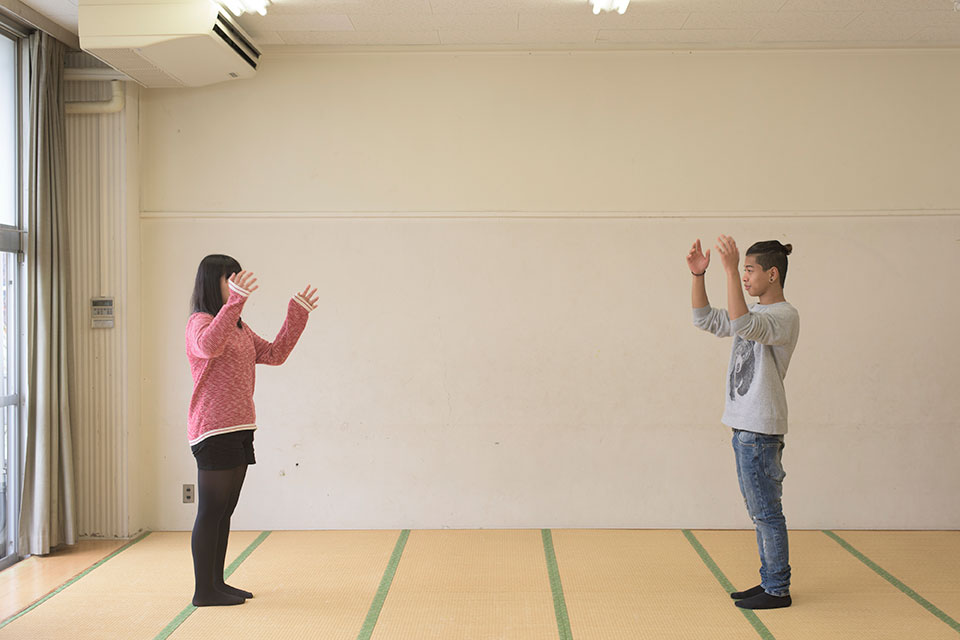
Workshop with students from the two schools
Open Studio
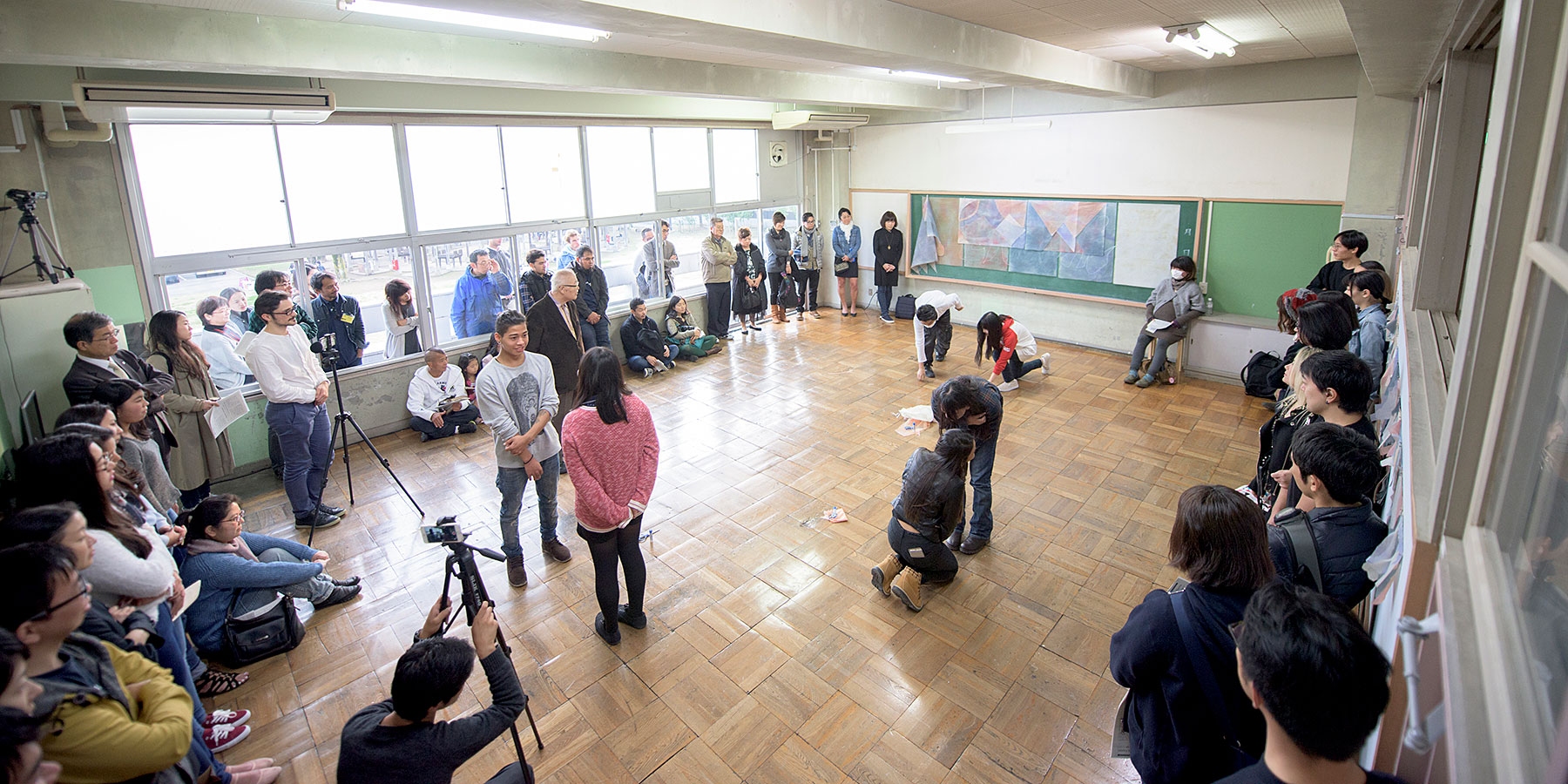
segurando, andando, caindo – holding, walking, falling
Performance
[Performers] Abe Hiroyo, Ueno Fernando, Sakai Izumi, Sakamoto Emilly Mayumi Mota, Tazoe Rodrigo, Watanabe Natsumi


segurando, andando, caindo – holding, walking, falling
Video, 9’45”
Artist Statement
My stay at the ARCUS brings research into the relationship between Brazil and Japan on a political and social level. Delving into historical, governmental, legal and social documentation, I will be speaking to Japanese-Brazilian individuals living in Moriya and the Ibaraki prefecture and collecting interviews, texts and images on these interactions.
Reason for Selection
There were a number of works among Cachucho’s recent productions that caught our eye. These works excelled in many respects, such as their point of interest, the visual power of the video, their ability to evoke a narrative, and the technical proficiency of the artist’s lectures and performances. His interests range broadly from the current post-colonial situation in South Africa to observations of the moments where a certain trajectory of thoughts of people were interrupted or diverted. When shaping a work, he is able to focus on a particular, characteristic history and psychological mechanism, and give it clear expression. We also evaluated highly his ability to produce a work that fascinates the viewer without being too dogmatic in his output. He is a young artist with a bright future, and we are eager to see what kind of research he will conduct concerning his proposal’s subject: the decline of foreigner populations in Japan, including Brazilian workers, and how he will tie it to art production. We also considered the fact that he hails from nation not yet represented in the ARCUS program.(Guest curator, Iida Shihoko)